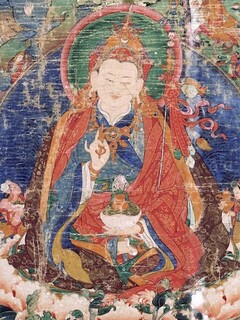Guru Padmasambhava
English (86) | Deutsch (13) | Español (22) | Français (39) | Italiano (1) | Nederlands (1) | 中文 (11) | བོད་ཡིག (85)
Texts related to the legendary Guru Padmasambhava and his various manifestations:
Introduction
by
Stefan Mang
Guru Yoga
Mantra
Prayers
by
Jigme Lingpa
by
Jigme Lingpa
by
Jigme Lingpa
by
Ratna Lingpa
by
Ratna Lingpa
by
Ratna Lingpa
